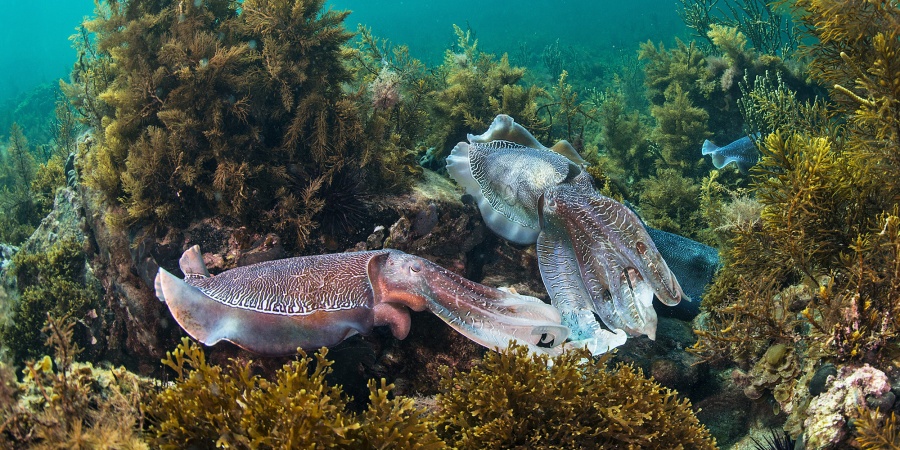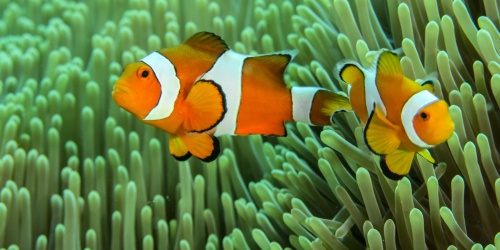
Cuttlefish - Photo the Ocean Agency / Adobe
What is a cuttlefish? Cuttlefish (Sepia species) are members of a group of advanced molluscs known as cephalopods, which also includes squid and octopuses. Everyone has at some stage collected cuttlebones washed onto the beach. These are the skeletons of the cuttlefish. The cuttlebone acts as a buoyancy mechanism for the animal, enabling the cuttlefish to remain on the bottom or swim freely at any depth. The density of the cuttlebone can be changed by pumping liquid in and out of chambers within it, thereby altering the volume of the gas-filled space. Next time you pick up a cuttlebone from the beach look for teeth marks. Teeth punctures in regular rows are made by dolphins or sea lions, which are one of their main predators.
What do they look like? Cuttlefish have eight arms and two suckered tentacles with which to capture food. The tentacles are usually retracted when not being used. The body of the common cuttlefish is about 36 centimetres long. It can quickly change colour to camouflage into its surroundings, but usually has a zebra-like pattern. The giant cuttlefish (Sepia apama) can reach 80 centimetres long.
Where do they live? Cuttlefish live in temperate and tropical seas around the world, especially in shallow water areas and around reefs.
What they eat and how: They feed mostly at night, on fish and crustaceans.
Threats: In many other countries around the world, and sometimes also in Australia, they are fished and eaten.
Behaviour: Below the cuttlebone is a muscular mantle which forms a cavity that is open at the front. When the mantle muscle contracts, this forces a jet of water through the funnel, strong enough to propel the animals through the water. Cuttlefish can also swim more slowly by moving the fins along the sides of their body. The water jet is also used to eject a cloud of ink if the cuttlefish is attacked, allowing it to escape. The original 'India Ink' used in fountain pens before the biro was invented was ink from cuttlefish collected in the Indian Ocean.
Breeding and caring for young: Cuttlefish attach clusters of eggs to underwater surfaces.
Conservation status: Most species of cuttlefish are common. They have not been well studied, however. In many other countries around the world, and sometimes also in Australia, they are fished and eaten.
How you can protect cuttlefish: For scuba divers, these intelligent animals are a joy to behold underwater. If you do not make any threatening movements towards them, they do not usually retreat, but will often change colour to match their surroundings while you watch them. Some individuals reach large sizes so they are often one of the highlights of a dive. Leave them where you find them for others to enjoy.



























